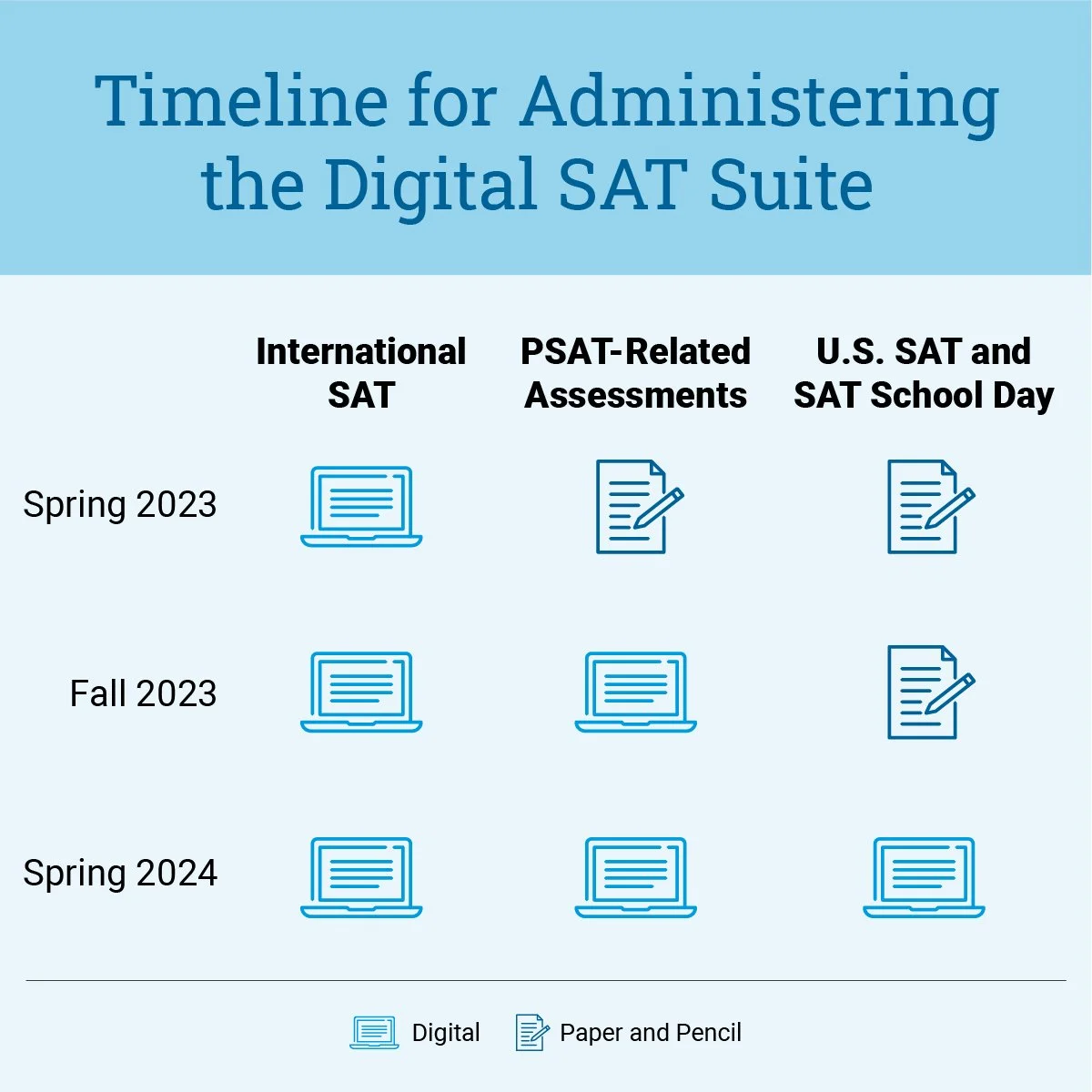The Digital SAT: Everything you need to know about the new format!
The Evolution of the SAT: Transitioning from Paper to Digital
For many high school students, the SAT has long been a pivotal milestone on the journey to college. Its traditional paper and pencil format has been both a challenge and a rite of passage. Yet, as we move further into the digital age, the tools we use to evaluate academic readiness must evolve. The introduction of the Digital SAT by the College Board is a testament to this evolution. Let's delve deeper into the nuances of this transition, addressing some of the most pressing questions students and educators might have.
Image by Freepik
The Testing Experience: A New Era of Assessment
The atmosphere of the SAT testing room is set for a significant transformation. In the past, the sight of a physical test booklet and answer sheet was synonymous with the SAT experience. The act of turning pages and filling in bubbles was almost ritualistic.
With the Digital SAT, this tactile experience will be replaced by a technological interface with a new adaptive format. Students will interact with the test on a computer, inputting their responses electronically. The College Board's choice of the Bluebook Exams app as the platform for this shift ensures that students will have a user-friendly and efficient testing experience.
Format Changes: Merging and Refining Sections
The transition to a digital format isn't merely about changing the medium; it's also a reevaluation of the content. Whereas the current version of the SAT separates Reading Comprehension and Writing, the Digital SAT will integrate these two sections into one cohesive section. Similarly, the previously separate Math sections will now be unified. This restructuring signifies a departure from extended reading comprehension passages. Instead, students will grapple with concise, paragraph-based questions that assess both reading comprehension and writing prowess. On the math front, the allowance of calculators for all questions is a notable change, aiming to reflect the way we do math in the world real world.
Time Management: Efficiency and Endurance
One of the most tangible differences between the traditional and Digital SAT is the test duration: The Digital SAT promises a more streamlined experience, with a total testing time of about two hours. This is a significant reduction from the paper SAT's three-hour commitment. Such a change is likely to be welcomed by many students, as it reduces the potential for fatigue and allows for more focused experience.
New Format
The new Digital SAT Format
The Digital SAT follows a completely new format, which breaks down as follows:
Reading and Writing: 54 questions across two 32-minute modules
Math: 44 questions across two 35-minute modules
Total: 98 questions across 134 minutes
Score Reporting: Quicker Insights and Analysis
The post-exam period, characterized by anticipation and anxiety, has always been a tense time for students. Historically, those who took the paper SAT had to endure a two-week wait before their scores were revealed. The Digital SAT, in contrast, offers a much quicker turnaround, with scores typically available within a few days. This expedited feedback can be a boon for students, allowing them to plan their next steps sooner, whether that's celebrating their achievements or considering a retake.
Accessibility and Inclusivity: A Test for Everyone
Perhaps one of the most significant advancements with the Digital SAT is its enhanced accessibility features. The digital platform can offer accommodations that were challenging or impossible to provide with the paper version. Features such as extended time, enlarged text, and audio instructions ensure that the SAT is more inclusive, catering to a broader range of student needs.
Rollout and Preparation: Navigating the New Landscape
The transition to the Digital SAT is a phased process. While the College Board has initiated its introduction for international students, domestic students will soon follow suit. By the Fall, those sitting for the PSAT will experience the digital format. And by Spring 2024, all SAT aspirants will engage with the digital version.
For those keen on early preparation, the College Board is offering full-length practice tests for the Digital SAT. These resources are invaluable, allowing students to familiarize themselves with the new adaptive testing format and hone their skills.
Addressing Common Queries:
Is the Digital SAT harder? It's not necessarily that the Digital SAT is harder, but it is different. The format changes and the integration of sections might pose new challenges for some students, while others might find the digital interface more intuitive. The key will be preparation and familiarity with the new format.
What is the difference between the SAT and the Digital SAT? The primary differences lie in the testing medium, format restructuring, test duration, score reporting speed, and enhanced accessibility features. While the core objective remains the same – assessing college readiness – the approach and experience will differ.
Is the Digital SAT shorter? Yes, the Digital SAT is shorter, lasting approximately two hours compared to the paper SAT's three-hour duration.
Conclusion
In conclusion, the shift from paper to digital is not just a superficial change; it's a comprehensive reimagining of the SAT experience. As with all changes, there will be an adjustment period. However, with the College Board's commitment to providing resources and ensuring a smooth transition, students can approach the Digital SAT with confidence and optimism.
How you can prepare for the Digital SAT
As we mentioned before, the College Board has made several full-length practice tests available via the Bluebook Exams app as well as several practice tests in PDF form. If you're planning to take the Digital SAT, it's important that you begin familiarizing yourself with the new format as soon as possible.
Even though the digital testing format is relatively new, our tutors already have a wealth of experience working with the Digital SAT since many of our international clients have already taken the test.
As with any standardized test, private tutoring can be an essential component to achieving your desired score through a combination of instruction, evaluation, and holding you accountable to your goals. Reach out to Honors Prep today and find out how we can help you maximize your potential on the Digital SAT!



